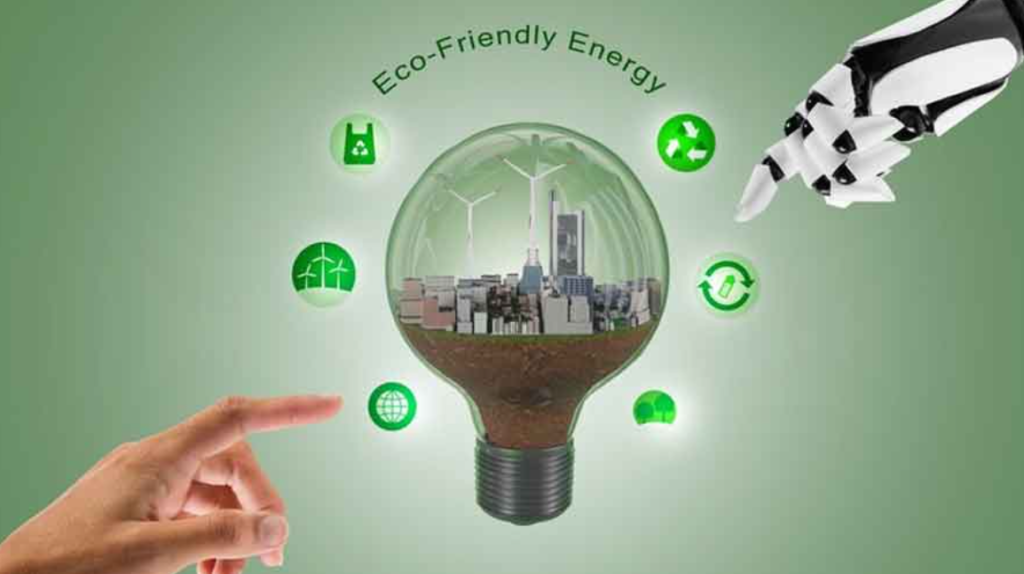
Revolutionizing Sustainability: 10 Ways AI Boosts Eco-Friendly Practices in Business
In an era defined by rapid technological advancements and an increasing urgency to address environmental concerns, businesses are at a critical juncture. The traditional models of operation are being re-evaluated as enterprises strive to not only thrive in the competitive market but also contribute positively to the planet’s well-being. At the heart of this transformative journey lies the intersection of artificial intelligence (AI) and eco-friendly practices—a powerful convergence that promises to redefine the way businesses operate and impact the environment.
Smart Resource Management:
AI’s prowess in analyzing vast datasets enables businesses to optimize resource utilization. From energy to raw materials, AI algorithms can forecast demand, identify inefficiencies, and suggest resource allocation strategies that minimize waste and maximize efficiency.
Precision Agriculture:
In the agricultural sector, AI-powered precision farming techniques are enhancing sustainability. AI analyzes data from sensors, satellites, and drones to provide farmers with insights into crop health, optimal planting times, and resource-efficient irrigation, reducing the environmental impact of agriculture.
Energy Efficiency and Consumption Optimization:
AI plays a pivotal role in energy management by optimizing consumption patterns and identifying areas for efficiency improvement. Smart grids, powered by AI algorithms, can balance energy supply and demand, reduce transmission losses, and integrate renewable energy sources effectively.
Waste reduction through Predictive Analytics:
AI’s predictive analytics capabilities empower businesses to anticipate and minimize waste. By analyzing historical data, AI can predict potential points of waste generation, enabling proactive measures to reduce, reuse, or recycle materials, thus contributing to circular economy principles.
Sustainable supply chain management:
AI enhances transparency and traceability in supply chains, helping businesses make informed decisions about sourcing materials. From assessing the environmental impact of suppliers to optimizing transportation routes, AI contributes to creating more sustainable and ethical supply chains.
Eco-Friendly Product Design:
AI aids in the design phase by assessing the environmental impact of products. It can suggest alternative materials, evaluate energy efficiency, and guide product development teams to create offerings with a reduced carbon footprint.
Natural disaster prediction response:
AI’s capabilities extend to predicting and responding to natural disasters, which can have profound environmental implications. By analyzing weather patterns, seismic data, and other relevant information, AI systems can enhance early warning systems and support more effective disaster response strategies.
Biodiversity Monitoring and Conservation:
AI, coupled with remote sensing technologies, contributes to biodiversity conservation efforts. It facilitates real-time monitoring of ecosystems, helps identify endangered species, and supports conservation initiatives by providing valuable insights into habitat health.
Carbon Emissions Reduction in Transpiration:
AI is instrumental in optimizing transportation systems for reduced carbon emissions. From route optimization to predictive maintenance of vehicles, AI contributes to making transportation more sustainable and environmentally friendly.
Environmental Data Analysis for Policy Making:
Leveraging AI to analyze environmental data aids policymakers in making informed decisions. From setting emission standards to designing conservation policies, AI-driven insights contribute to the formulation of effective and impactful environmental regulations.
As we delve into these 10 ways AI can boost eco-friendly practices in business, it becomes evident that the marriage of technology and sustainability is not a distant vision but a tangible reality. The transformative potential of AI extends far beyond operational efficiency—it is a linchpin for fostering a more harmonious relationship between businesses and the environment.
Article Credit: analyticsinsight